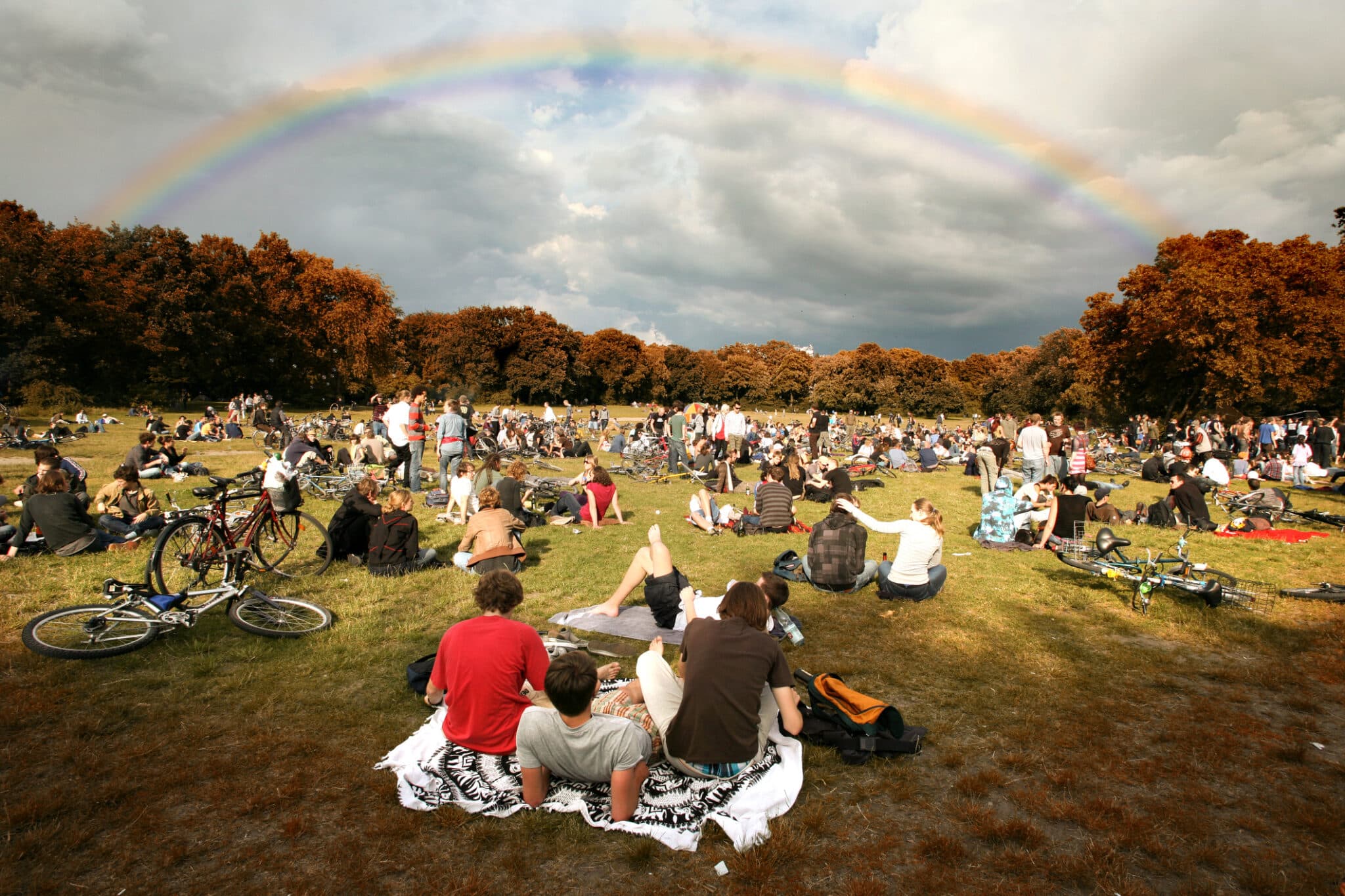Products You May Like
So, what makes a city “green”?
Cities that have placed a high priority on sustainability, eco-friendly activities, fossil fuel-free transportation, and green spaces for their residents and visitors are transforming the world’s cities from concrete and steel wastelands separated from the natural world to combinations of unspoiled greenery and the amenities of modern life.
In determining what makes a green city, important factors include how much of the city’s total energy needs come from renewable energy; how much of the population uses public transportation; the city’s walkability; the amount of carbon dioxide emissions it produces; its air quality; the amount of water its residents consume and the amount of wastewater they produce; the city’s building efficiency standards; its waste management standards and the availability of city-wide recycling and composting; the number of green initiatives it has; and the number of parks, green spaces and farmers’ markets in the city.
This list is drawn from organizations that have looked at factors like these to determine the greenest cities on Earth. This includes Culture Trip’s 10 greenest cities list, Resonance Consultancy’s 2020 index of the world’s 10 greenest cities and The Roundup’s list of the 21 most eco-friendly cities based on their Siemens Green City Index score as well as new sustainability plans.
The 10 Greenest Cities in the World
Amsterdam, Netherlands

Not only does Amsterdam have many “green” attributes, but the Netherlands’ capital also has ambitious sustainable development goals and an eco-friendly culture that embraces meat-free dining, doing away with plastic use and reducing carbon emissions. And cycling is the city’s main mode of transportation!
Sometimes referred to as the “Venice of the North,” Amsterdam has a plethora of green spaces and parks, a healthy thrift culture and has adopted a proactive shift toward a circular economy. The city is not only home to Europe’s first sustainable fashion museum, Fashion for Good, but has a street dedicated to vintage fashion.
One of Amsterdam’s goals is to reduce carbon dioxide emissions in the city by 55 percent by 2030. The Dutch capital also wants to become climate adaptable, use all roofs that are suitable for solar energy and be the first city in Europe to be 95 percent emissions-free by 2050.
Amsterdam has plans to stop using natural gas before 2040 and wants 80 percent of local residences to be powered by sustainable energy by 2030.
Eco-friendly activities in the canal capital of the Netherlands include loading up your rented bicycle’s wooden basket with meat-free picnic foods and cycling over to one of the city’s many parks or canals — it has more than 160; visiting one of its more than 50 museums, including the Anne Frank House, the Rijksmuseum — the national museum of the Netherlands — the Rembrandt House Museum and the Van Gogh Museum; renting a solar-charged electric boat or pedal boat to cruise the historic canals or make your way to the surrounding countryside; for serious eco-warriors, going on a cruise to pick up plastic via a plastic fishing cruise; or visiting one of the colorful city’s many vintage, flower or farmers’ markets.
“Amsterdam is noted always for her breathtaking beauty and network of canals that run through the city. On a cruise, you at once find peace of eyes and a tranquil heart as you glide by the green cypress trees, the birch, the maple, and the lush green lawn overlooking the Museumplein,” Indian author from Bangalore Subhadip Majumdar told EcoWatch.
Vienna, Austria
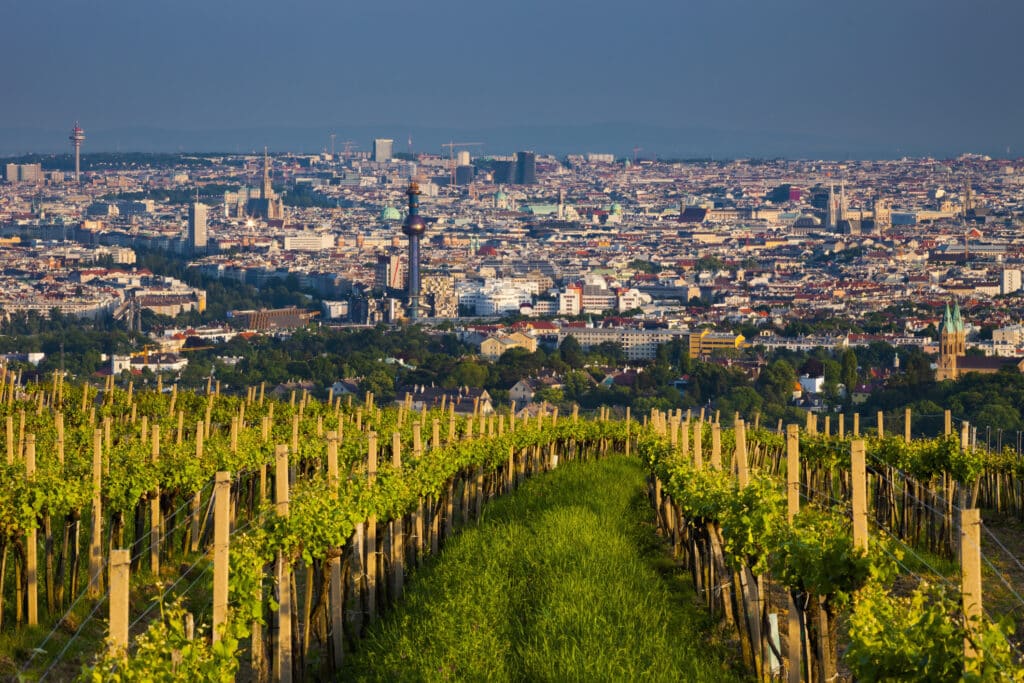
The environmentally-friendly and culturally rich “City of Music” was home to Haydn, Mozart, Beethoven, Schubert and psychoanalyst Sigmund Freud.
Vienna is not only known for its cultural history, but for being pretty darn green as well. The stately city boasts a sharing system of more than 20,000 rental bikes for visitors and locals to ride. It also takes pride in its sustainable development and has plenty of designated green spaces. Most of these spaces are managed by both public and private entities, like residents of the community, the city council and businesses.
The Central European city’s highly walkable/bikeable layout with an emphasis on public parks is the consequence of precise and thoughtful city planning. First opened in 1862, Stadtpark, Vienna’s stunning City Park, was inspired by English gardens. Donau-Auen National Park, located just outside the city, is a conservation site for Central Europe’s last great floodplain. Founded in 1996, the park sits on more than 23,700 acres and is under international protection.
“Once one takes the metro from Reichstergrasse and the train rides through Reichbrucke bridge, one surrenders to the lap of nature,” Majumdar told EcoWatch. “The shining blue Danube river is surrounded by the magnificent beauty of lush green trees and river banks. So near to such a historical city, Vienna sets in you a magic of what the shade of green can do to a city dweller. It adds to your senses and you feel that the greenery and the blue of the Danube are just a tribute to a Van Gogh painting or in tune with Mozart.”
Nearly half the population of the City of Dreams has a yearly transit pass, so as you roam the sparkling gem that is Vienna via its public transit system, you’ll be in good company.
As Billy Joel sang in his 1977 song, “When will you realize, Vienna waits for you?”
Singapore
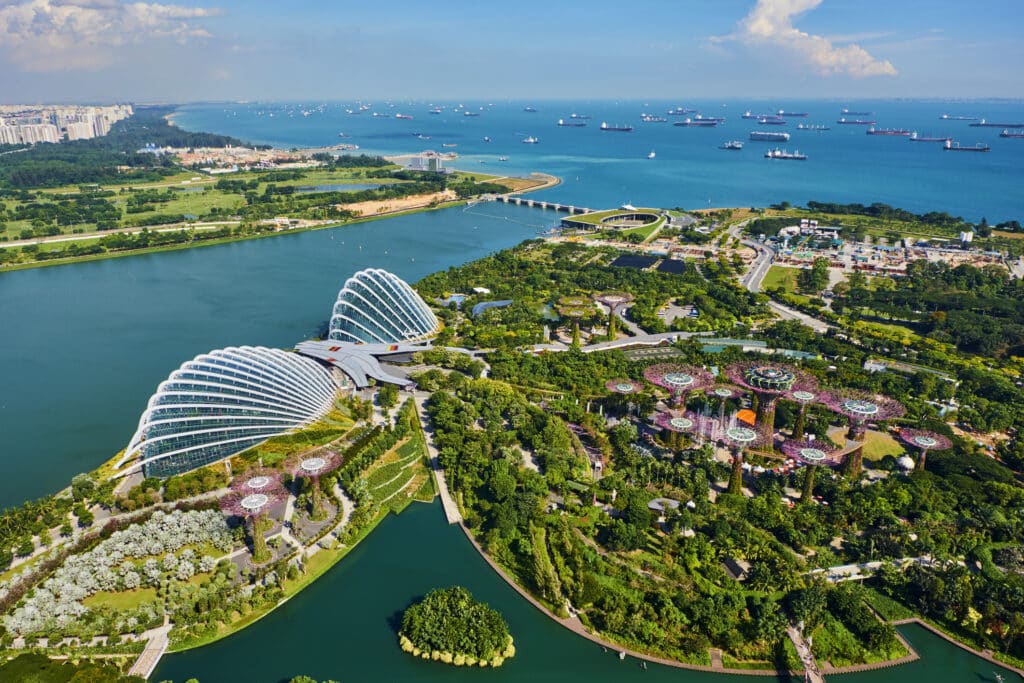
Singapore is known as the “Lion City,” an apt name for a tropical island that is the greenest city in Asia.
Singapore is dedicated to sustainability, and that includes having strict codes for green building that have been in place since 2008. All existing buildings are required to meet a green building certification specifically for tropical climates.
Also called the “Garden City,” one of Singapore’s signatures is that it is replete with greenery. The city’s Gardens by the Bay showcases hundreds of acres of reclaimed parkland in the city center with tropical trees that grow up to 165 feet. A main attraction are 18 “supertrees” — from 80 to 160 feet tall — that are powered by solar energy.
Rooftop gardens are common in Singapore, which showcases thousands of green roofs and a water reclamation system for treating wastewater.
Old railroad tracks have been converted into a 15-mile greenway, similar to New York City’s High Line. Many of the city’s parks are also being transformed into “therapeutic gardens” with the elderly in mind.
There is something for everyone in a city that Israeli architect Moshe Safdie called “the most cutting-edge agency in the world. They have very effective guidelines for development, and they review design as it evolves.”
Stockholm, Sweden
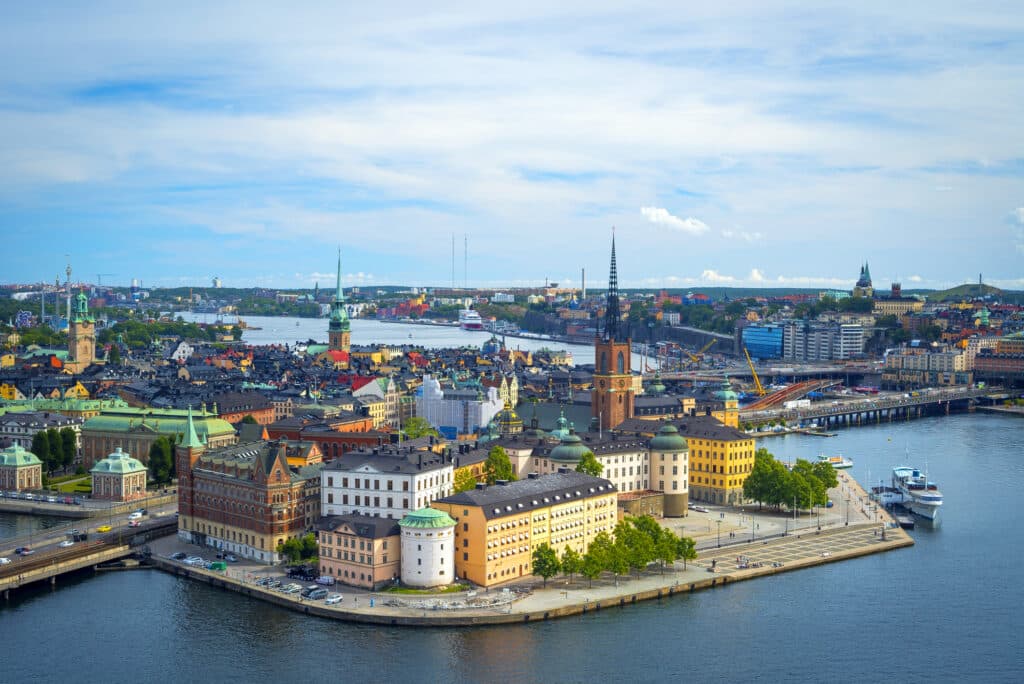
One of the greenest cities in Europe, more than two-thirds of Stockholm’s population either walk or cycle to work. Renewable energy sources provide more than half of residents’ electricity in Stockholm, and the city has energy efficiency standards for buildings.
“Stockholm is surely an urban planner’s dream. Everything works. Everything looks good,” said American author Janine di Giovanni.
While you’re walking the colorful streets of Stockholm or strolling alongside the Söderström River, take some deep breaths of the cleanest air of any European city.
Stockholm is made up of 14 islands, and many residents use ferries to commute to work. You can join the locals on a ferry, or take a kayak if you’d like to get some exercise as you explore.
There are so many parks and green spaces in the Scandinavian version of Venice that more than 80 percent of Stockholm residents live within a five-minute walk of an area with greenery.
Restaurants in Stockholm take pride in using fresh ingredients from the local markets, like Östermalms saluhall. Built in 1888, this historic market hall has antique stalls and sells produce, breads, cheeses, chocolates and other local goods.
As Bjorn Ulvaeus of ABBA said, “Wild horses couldn’t drag me away from a summer on the Stockholm archipelago.”
Reykjavik, Iceland
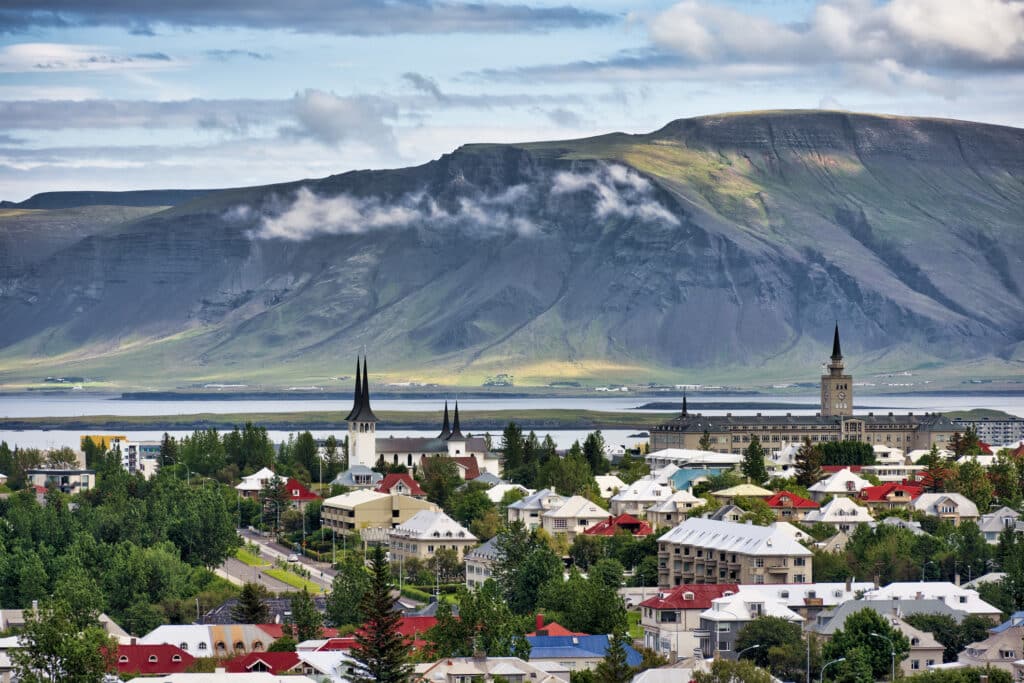
You’d be hard-pressed to find a more unique place on Earth than Iceland. To begin with, 11 percent of the country is made up of glaciers.
Reykjavik is the capital and largest city with about 60 percent of the population of the entire country living there.
Renewable energy is standard in the land of fire and ice, with geothermal sources and hydropower providing nearly all of Reykjavik’s heat, electricity and water. Ninety percent of the country’s primary energy needs are met with renewable sources.
The city’s water is some of the cleanest there is, as it comes from natural springs. In fact, more than 95 percent of the island’s drinking water is pure, untreated groundwater.
Eco-friendly recreation is everywhere, from glacier walks, hiking to volcanic hot springs, river rafting, camping, horseback riding, cave exploration, bird watching or a visit to the Nauthólsvík Geothermal Beach.
To get around Reykjavik, you can walk, ride a bike or hop on one of the city’s hydrogen buses. And if you’re driving an electric vehicle (EV), you’ll enjoy free parking.
All in all, Reykjavik is an eco-explorer’s dream!
Paris, France
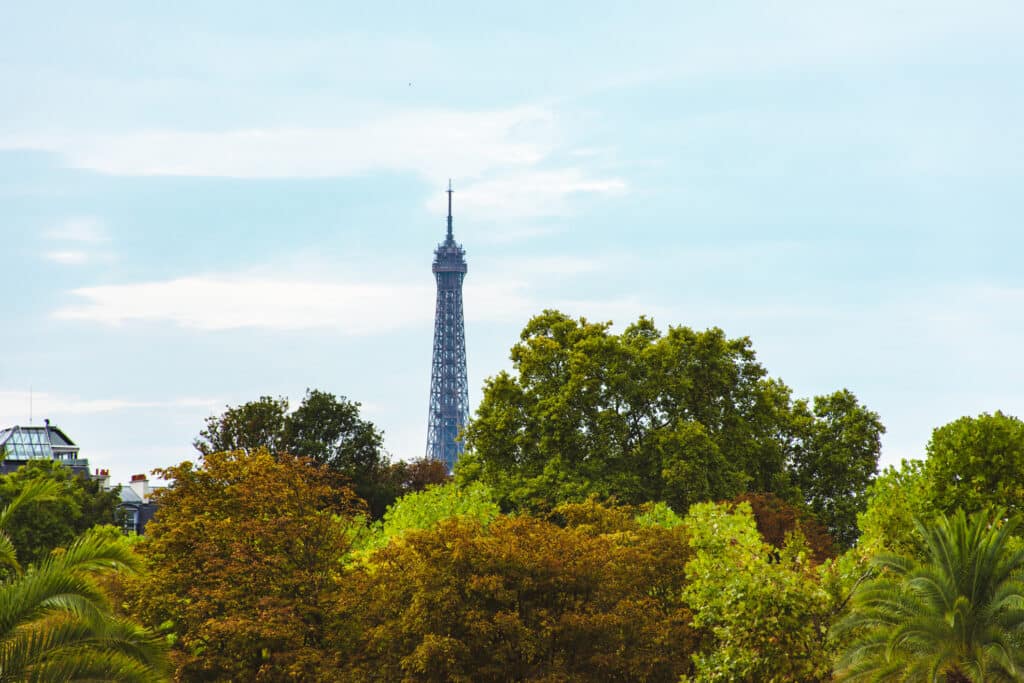
Not only is Paris one of the world’s most popular tourist destinations, it’s also becoming a leader in eco-friendly practices. The City of Light’s current mayor, Anne Hidalgo, has been implementing green policies around the city, with a plan to make Paris the greenest city in Europe by 2030.
For starters, about 900 miles of bike lanes have been put in across Paris, and the quais along the River Seine and other main roads have been closed to traffic. Beginning in 2024, diesel cars will no longer be allowed in the city, and gas-powered cars will be banned by 2030.
Four urban forests are being planned next to prominent landmarks like the Hôtel de Ville, and Mayor Hidalgo has promised to plant more than 170,000 trees, with a goal of half the City of Love being covered by greenery by 2030. The city has even eased building codes to make it easier for residents to plant trees.
Paris also plans to get rid of 140,000 parking spaces to make the capital city even greener and reduce traffic.
“I remember the first time I reached Paris, it mesmerized me with her beauty, a sense of equilibrium between nature and the senses. Picasso painted here, Van Gogh walked with his canvas each morning to find the windmill amidst the greenery and old cream yellow buildings of Paris,” Majumdar told EcoWatch.
Berlin, Germany

Berlin is a walker’s dream, with plentiful parks and public gathering spaces. This capital city brimming with culture and creativity is considered the green capital of Germany.
“Berlin is a city of leafy boulevards, grand Neoclassical buildings, world-class art, glitzy shopping arcades, and funky graffitied neighborhoods with gourmet street food,” travel writer Rick Steves has said.
If you want to use an EV to get around the city, there are more than 400 charging stations, with more to be added soon.
Of course, cycling is one of the best ways to get around most European cities.
“I feel very fragile cycling in London, whereas in Berlin there are proper cycle paths everywhere,” said Scottish author and TV presenter Gavin Esler.
The city provides renewable energy incentives for solar panels and recycling, as well as a great transportation system.
To add to its list of green attributes, Berliners also have one of the lowest water usage rates per capita in Europe.
A visit to Berlin is the perfect combination of avant-garde culture and eco-friendly adventure.
As David Bowie said, “Berlin, the greatest cultural extravaganza that one could imagine.”
Curitiba, Brazil

Since the 1970s, Curitiba’s city council has been furthering green policies through subsidies and tax cuts. Residents have planted 1.5 million trees along the highways, and the city has a Bus Rapid Transit system, which it pioneered.
The city of nearly two million is regarded as the most liveable city in Brazil. Its ample green space also makes it one of South America’s greenest cities.
Two unique green attractions in Curitiba are the Pope’s Woods and the German Woods. The Pope’s Woods were inaugurated shortly after Pope John Paul II visited the city in 1980 and consist of nearly 12 acres of native greenery with a bike trail and a teahouse fashioned in the style of Portugal. A whimsical feature of the German Woods is a path retelling the fairy tale of Hansel and Gretel by the Brothers Grimm.
San Francisco, California
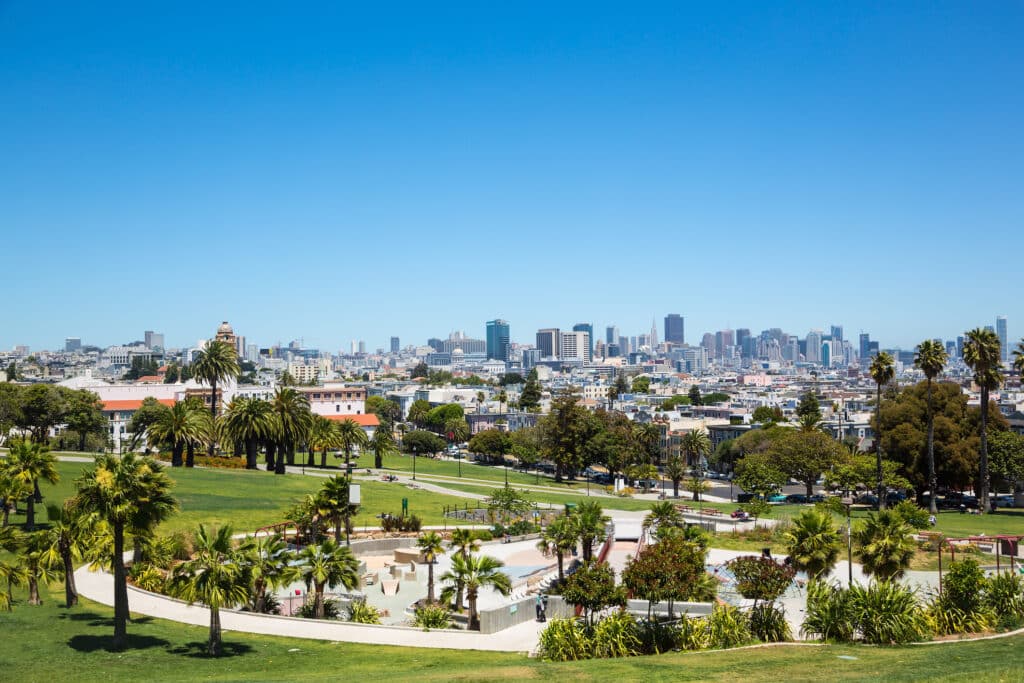
One of the greenest cities in the United States and the world, San Francisco not only started the “eat local” movement, it’s the home of one of the first grassroots environmental organizations in the country, the Sierra Club, which was founded in 1892 by a group of Californians and the Scottish-American naturalist and conservationist John Muir, who was its first president.
The City by the Bay has 220 city parks, including its oldest, Buena Vista Park, which opened in 1867, and its largest and most famous, Golden Gate Park, which consists of 1,017 acres of public land, including hundreds of trails and nine lakes. Golden Gate Park opened in 1870 and is home to thousands of species of plants, dozens of mammal species, 250 species of birds, 20 reptile species and 11 species of amphibians. A herd of American bison lives in a meadow at the western end of the park. Bison were first introduced to the park in 1891 by Park Superintendent John McLaren in an effort to preserve the species, which was close to extinction in the U.S. due to their massive slaughter by hunters.
The park is also home to the San Francisco Botanical Garden and the Japanese Tea Garden, among many other attractions.
San Francisco has several public transportation options, including cable car, light rail, bus and ferry.
Among its many green policies, in 2016, San Francisco became the first major city to require solar panels on all new buildings of ten floors or less. In 2007, it became the first city to ban non-compostable plastic supermarket and pharmacy chain checkout bags, and the sale of plastic water bottles is not permitted on city property.
The Golden Gate City also has renewable energy use incentives and mandatory recycling and compost programs.
“San Francisco is the only city I can think of that can survive all the things you people are doing to it and still look beautiful,” American architect Frank Lloyd Wright once said.
Washington, D.C.
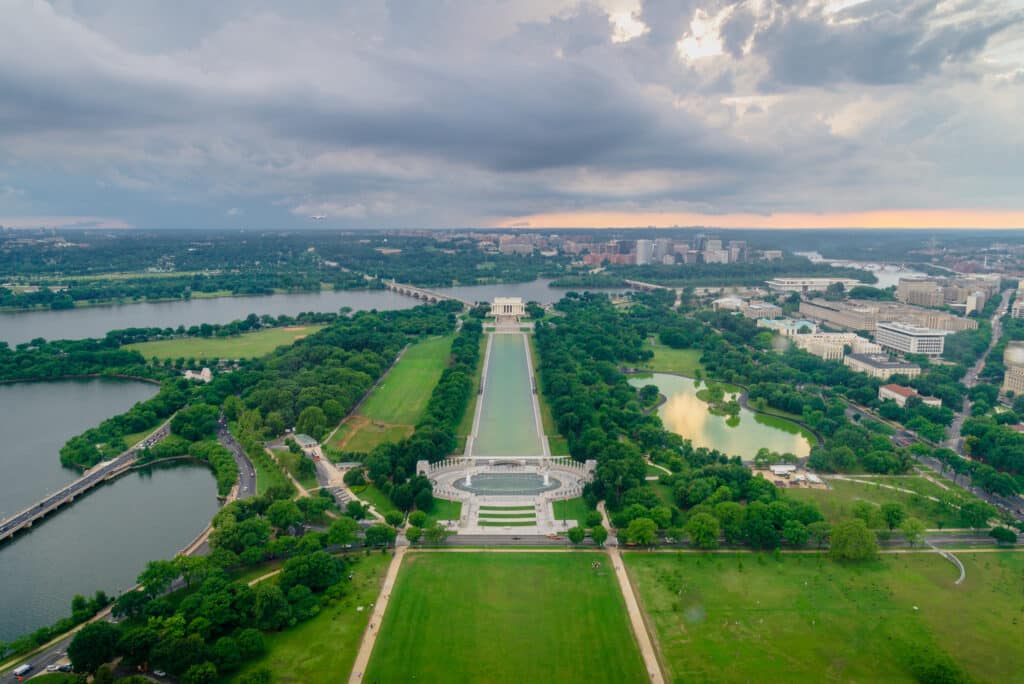
An unsung hero of the list, the capital of the U.S. has many green attributes, including an abundance of parks and public plazas, like 1700-acre Rock Creek Park. Established in 1890, the park has a nature center, offers horseback riding lessons and has wooded trails to explore on foot or horseback.
Among the many sites at the National Mall, the U.S. Botanic Garden’s living plant museum is free and open every day.
The D.C. area has a vibrant food culture, including a number of farmers’ markets, like the Arlington Farmers Market, where you can find a variety of delicacies, like olives from a family-owned Greek farm and, for that fall feel, apple cider doughnuts. The Foggy Bottom Market near George Washington University has certified organic vegetables, fruit and vegetable juices, soups, baked goods and many other treats.
“I love living in D.C. Compared to other cities in the U.S. that I’ve lived in, it’s one of the cleanest cities. However, underserved neighborhoods on the city’s southeast side need more trash cans, recycling bins, and more parks,” organizer and writer Myriam Sabbaghi told EcoWatch.
